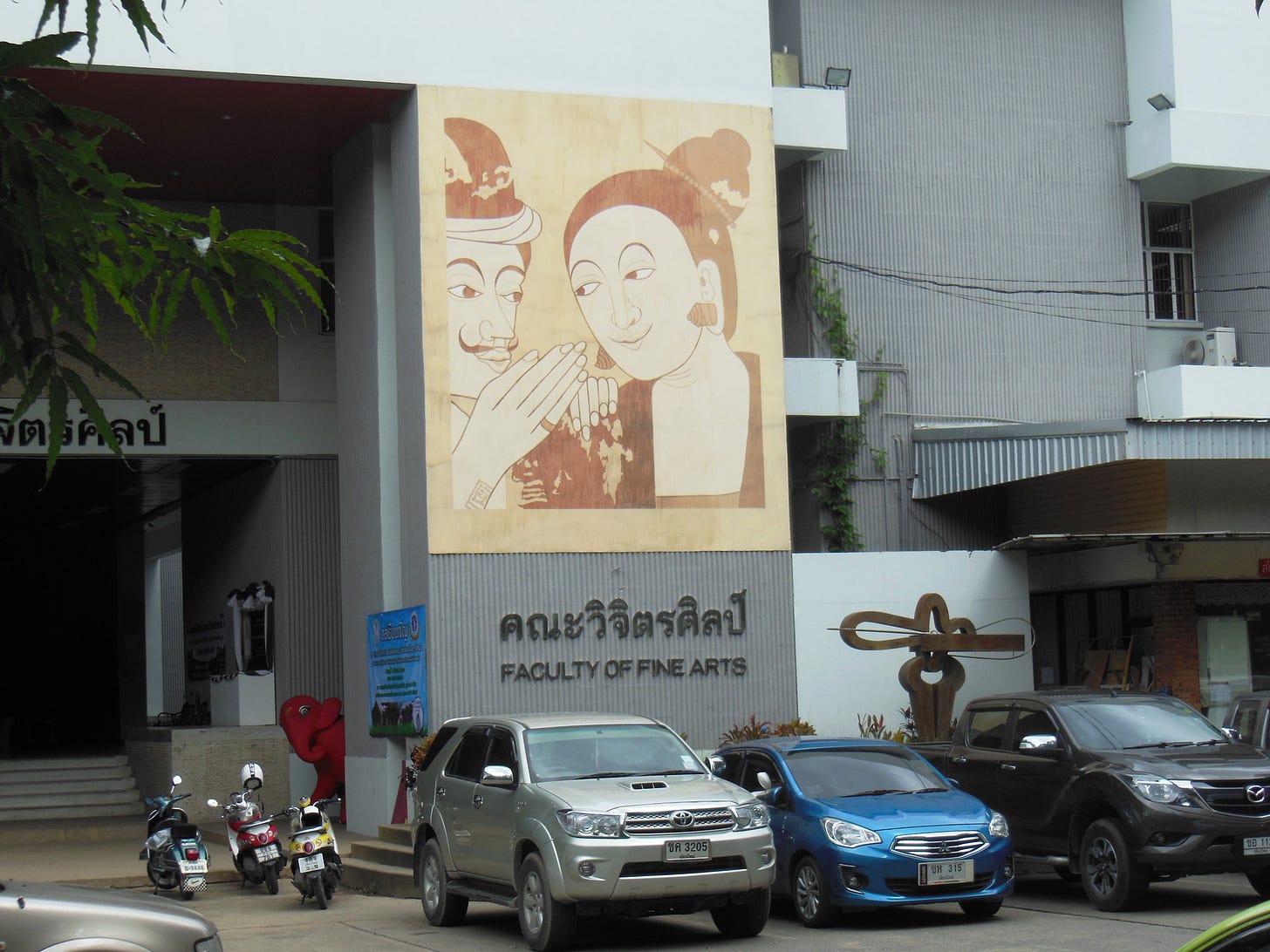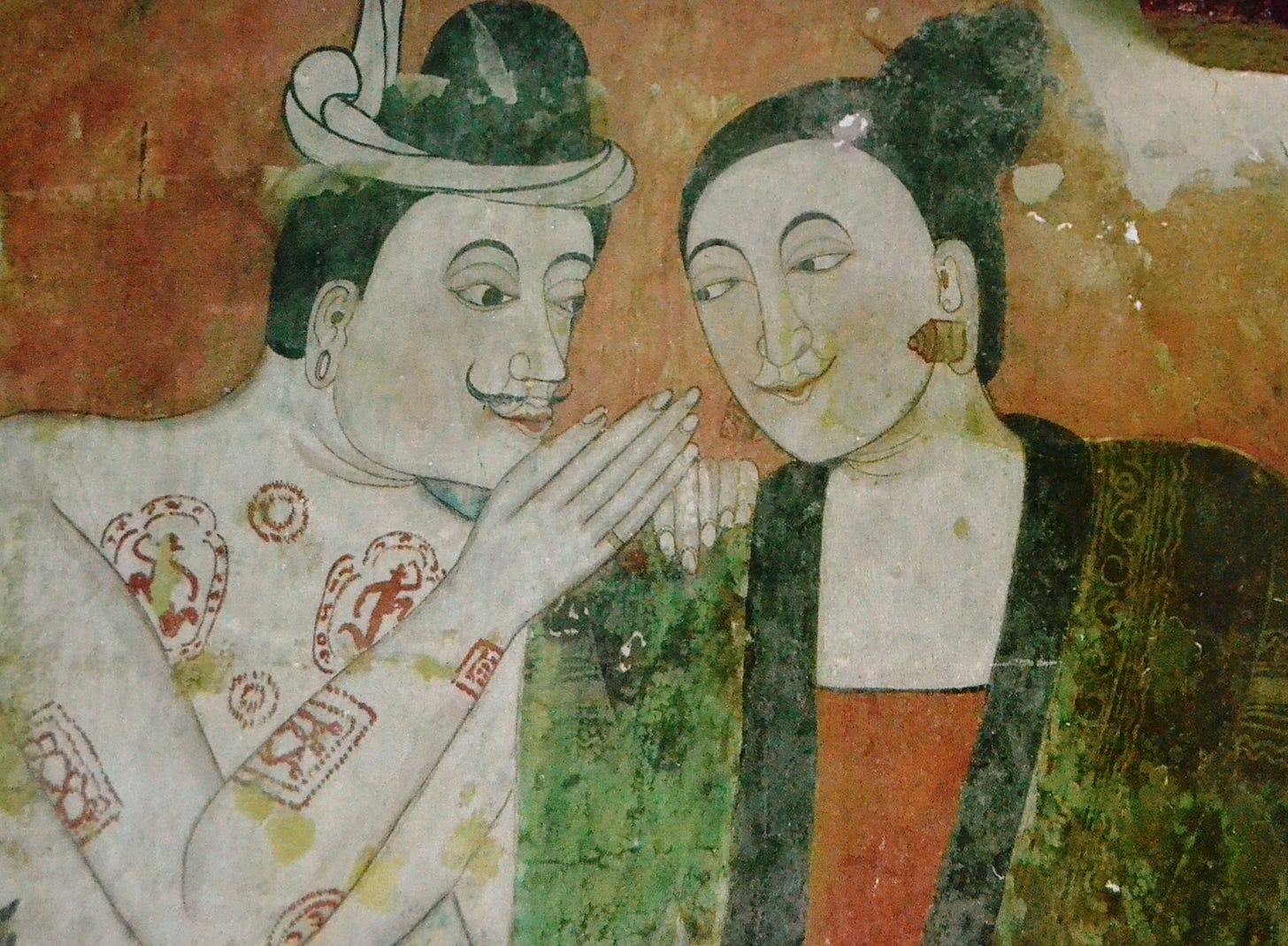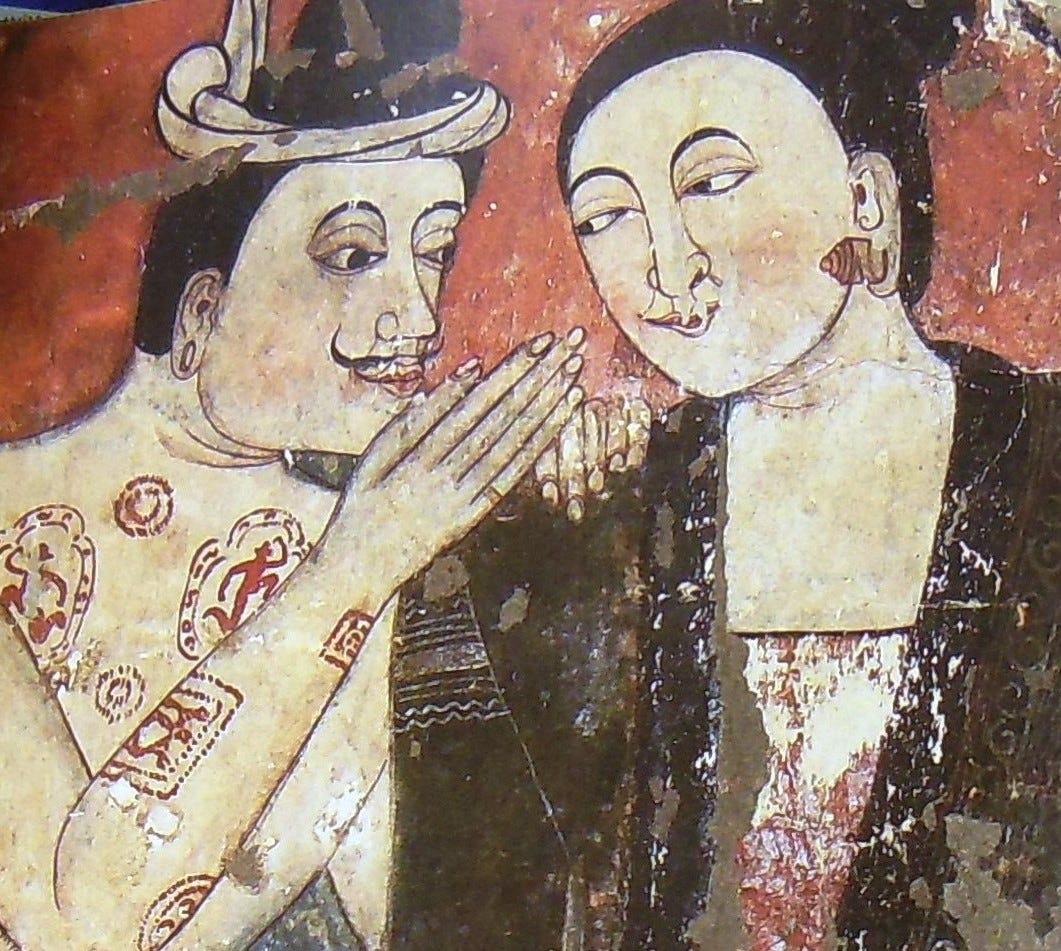What is called a “wat” in Thailand and Laos is nothing more than a collection of buildings, that not only include the “Assembly Hall,” where faithful Buddhists worship, but also the sleeping and eating quarters for the monks, in addition to places for the monks to be ordained, meditate and study old palm leaf manuscripts.
Like most visitors to Thailand, I assumed that the country’s Buddhist temples were owned by the local monks or their monastic order.
When I visited a wat in either Thailand or Laos, I saw monks in charge of everything: maintaining the buildings and doing the most mundane things, sweeping up and making the place look neat and tidy.
It seemed reasonable to conclude that the monks owned these places that they ran.
But that isn’t the case.
In Laos all the Buddhist temples are the property of the Lao People's Democratic Republic, the official name of the country that is known in the West as “Laos.”
Ordinary Lao people used the term, “Lao PDR’ to refer exclusively to the Communist Party who run what they know as bpateet lao, “the country of Lao.”
The fact that professed non-believers (card carrying members of the Lao Peoples Democratic Party) own all the Buddhist temples is an irony that has escaped the notice of the Communists Party’s leadership.
Something similar has occurred in Thailand. The Thai government, through its Department of Fine Arts, was the legal owner of all the wats in the country.
Thailand’s Department of Fine Arts owned Wat Phumin and everything in it, even though the temple and all of its wall paintings were commissioned by Nan’s last independent king. No one could change so much as a lightbulb without the written permission of the department.
It seemed ridiculously improbable that someone, without written permission from the Fine Arts Department, would come into this dark 400-year-old temple, and begin to alter what was the most widely recognized painting in Thailand.
If The Whisper was really a forgery, the Fine Arts Department must have given the go-ahead for the forgery.
After living in Nan for a little more than a year, I still didn’t know all that much about its history or the history of The Whisper, but I did no one thing: everyone in Thailand knew this painting.
If the Thai government would be bold enough to risk forging this painting there must be something about it, they didn’t want anyone to know, something I couldn’t understand,
I didn’t tell anyone what I now knew, not even my daughter. How could I?
I didn’t understand it myself.
I decided to do something that made some sense.
I left the next week on a six-hour bus trip to Chiang Mai, the largest city in Northern Thailand.
When I saw a large image of The Whisper on the façade of the Faculty of Fine Arts building at Chiang Mai University, I knew I had come to the right place.
Sure, it was an image of the doctored painting, but it was someplace to start.
Chiang Mai University, façade of the Faculty of Fine Arts building, Photograph by Paddy Burke, March 15, 2015.
Comparing the Photographs and My Video
On the top floor of the Fine Arts building was the library. At the library’s Reserve Desk I found some books with a number of photographs of The Whisper, taken in the 1970’s.
Comparing the old photographs in these books to the photographs I had taken in 2014, I was stunned at the sheer audacity of the forgery.
The Whisper, west wall of Wat Phumin. Photograph by Paddy Burke, January 2014.
In an attempt to understand what the forger had done I made a short video that compared the old photographs with ones I had taken when I first arrived in Nan in January of 2014.
I immediately saw the huge differences between the photographs in these books and the later alteration.
The most obvious difference was the way the forger turned the expression on the face of the woman in the painting from a disbelieving, questioning look into an obliging smirk, changing the entire feeling and meaning of the original painting.
I could see these changes immediately. They literally jumped out at me. But I had absolutely no idea what the forger had done to so drastically change the painting.
The Whisper, the Original
This is, my photograph of a photograph found in “Wat Phumin and Wat Nong Bua” (1986), Muang Boran Publishing House (Used with written permission). The original photograph was taken some time in the 1970s, according to the publisher. My photograph of this photograph was taken in February of 2015
The two women in the photographs couldn’t have been more different.
Both women share a familiarity with the tattooed man, a familiarity based on long and intimate experience.
But these are entirely different women. They react to the man’s whisper in strikingly different ways.
The woman in the forgery happily goes along to whatever the man is whispering about.
The woman in the original painting isn’t going to do anything of the sort.
She, too, knows this man and has listened before to his crack-brained plans and passing thoughts..
His latest scheme, the one he is whispering about, is even crazier than all the others.
The first book I looked at in the library was, “Wat Phumin and Wat Nong Bua,” published by the Muang Boran Publishing House, a private conservation organization often consulted by Thai government museums.
“Wat Phumin and Wat Nong Bua” was one of a long series of books they had published on the temple mural paintings of Thailand, written in both Standard Thai and English.
In this book’s “Foreword” I read that in 1982 Thailand’s Fine Arts Department had been severely criticized in the newspapers and by scholarly organizations for recently altering some of the paintings at Wat Phumin:
Some areas were retouched to make them look better for advertisement photographs. From these causes we can conclude that murals are much more vulnerable to ignorant human activity than to natural damage.
“Bingo” I said to myself. “This proves I was right from the get-go. I hadn’t been crazy.”
Next: Chapter Three: The Silence of the Experts




